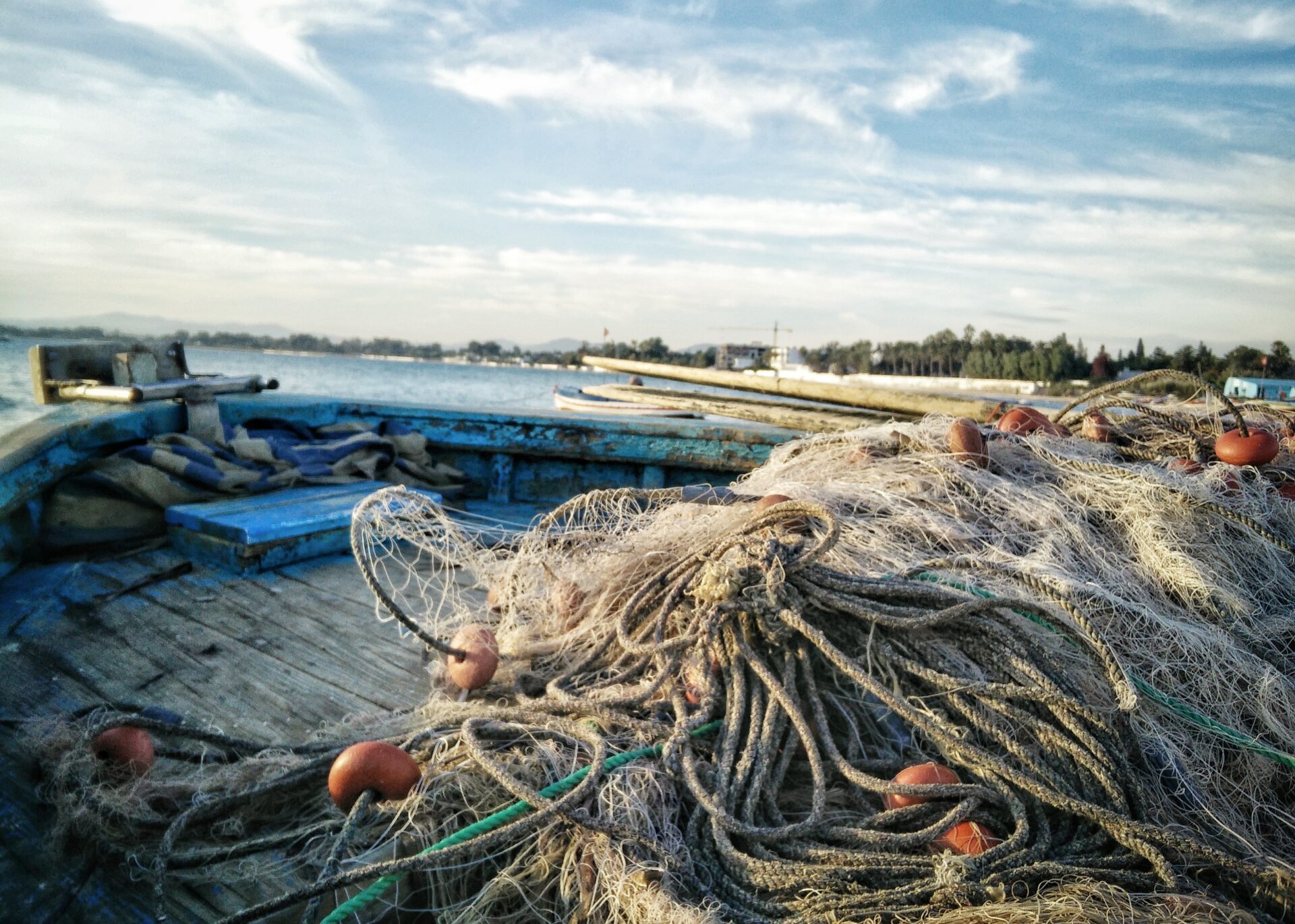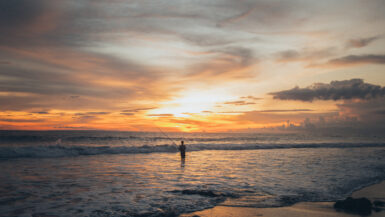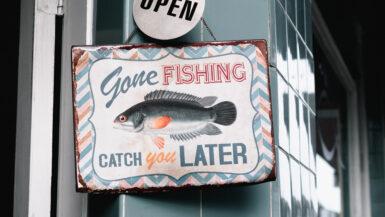Fishing for catfish is an enjoyable and rewarding experience, both for novice and experienced anglers alike. Catfish can be found in both ponds and small lakes, and are a great target for anglers looking to develop new skills or simply tend to a relaxing day out on the water. With its ease of access, catfishing is a great option for a quick fishing trip. To get you started, this article will provide some tips on how to fish for catfish in ponds and small lakes.
Preparation
Before you set out to fish for catfish in a pond or small lake, it’s important to make sure you have the necessary equipment. Having the right supplies on-hand can make a big difference in the success of your fishing outing. Necessary supplies for catfishing include a fishing rod and reel, hooks, weights, and bait. If you’re unfamiliar with the type of fishing rod or lure you need, it’s a good idea to speak with a local fishing guide or visit a local tackle shop.
Choose a Fishing Location
When looking for the best spot to fish for catfish in a pond or small lake, search for areas where the water is deep, if possible. Deep-water ponds and lakes often have a variety of structure and cover that catfish prefer, like sunken logs, submerged tree stumps, or large rocks. If the water is shallow, look for shoreline drop-offs, vegetation like lily pads, or areas with a high concentration of baitfish.
Choose Bait for Catfishing
Once you’ve determined your fishing location, it’s time to choose your bait. Catfish are scavengers, so they will feed on almost anything that crosses their path. Popular catfish baits include live bait like minnows, worms, and crayfish, as well as prepared baits like dough balls, commercial stink baits, and even canned tuna. Experimenting with different baits until you find what’s working best can be a great way to improve your catfishing success.
Outfit Your Gear
Once you’ve gathered the necessary supplies and chosen your bait, you’ll need to assemble your rod and reel. For catfishing, it’s best to use a rod and reel with a medium-heavy action and a fast retrieval rate. Secure your bait to the hook, ensuring that the point of the hook is clearly visible. Then, use a weight to cast your line into desired fishing location.
Set the Hook
After the bait has settled into the water, it’s time to set the hook. Catfish tend to bite suddenly, without warning. It’s important to pay close attention to your line at all times. As soon as you feel a tug, quickly reel in your line and set the hook by pulling up on the rod with a smooth, steady motion.
Retrieve Your Catfish Catch
At this point, you can slowly begin to reel in your catch. As you do so, it’s necessary to carefully monitor the line tension while avoiding jerky movements and sudden pulls. If all goes well, you should have a nice catfish on your hook in no time.
Hooking and Baiting
Before you can go out and start hooking and baiting for catfish, you must first decide what type of bait you want to use. Common bait used for catching catfish includes nightcrawlers, minnows, leeches, shad, and fish found in the local pond or lake. Some anglers also use liver, chicken livers, hot dogs, and even dog or cat food.
Catfish Fishing Techniques
Once you have decided on the type of bait you want to use, there are various techniques that can be used when fishing for catfish. The most common technique is the “cast and wait” method. This involves casting the bait out into the water and allowing it to sink. Once the bait has settled to the bottom, you will need to wait and watch for the catfish to bite.
Drifting and trolling are also popular methods for fishing for catfish. This involves trolling or drifting a boat over the pond or lake. Anglers will cast nets out behind the boat and then wait for the catfish to be lured in. It may also be necessary to use multiple baits in order to attract the attention of the catfish.
Using the Right Gear
When fishing for catfish, it is important to use the right gear for the job. This includes the right type of rod and reel, as well as a good quality line. It is also important to use the right size and type of hook for the bait you are using. For example, if you are using a smaller bait such as a nightcrawler or minnow, you will need to use a smaller hook.
Selecting the Right Location
Before you start your catfish fishing, it is important to select the right location. Catfish prefer warm and shallow waters such as ponds and small lakes. You should also look for areas where there are plenty of cover and structure, such as weeds, logs, and rocks. This will give you the best chance of attracting and catching catfish.
Conclusion
Fishing for catfish in ponds and small lakes can be an exciting and rewarding experience. Before you begin, it is important to choose the right type of bait, use the right gear and techniques, and locate the best spots for catching catfish. With the right preparation, you can ensure that your catfish fishing adventure is a successful one.
Fishing Techniques
One of the most popular methods for catching catfish in ponds and small lakes is by casting. When casting, you will need to choose the right lure or bait. Live bait such as earthworms, minnows, and crayfish are commonly used when fishing for catfish. Artificial lures such as spinnerbaits or jigs can also be used. When selecting a lure, consider the size of catfish in the area and choose an appropriate size. You can use a spin or a bait-casting reel, depending on the depth of the water and the size of the fish you are hoping to catch. Once you have chosen the right gear and bait, cast your line out into the water and let it sit for a few minutes.
Bottom Fishing for Catfish
Bottom fishing is another popular method for catching catfish in ponds and small lakes. This method involves using a bottom rig, which consists of a weight, swivel, and a hook, to fish on the bottom of the lake or pond. You will need to choose the right size of weight, depending on the depth of the water. Attach appropriate bait, such as chicken livers, night crawlers, or large shrimp, to the hook and let the line sink to the bottom. Once the bait reaches the bottom, wait for Catfish to take the bait.
Trolling for Catfish
Trolling is another great way to catch catfish in ponds and small lakes. To troll, you will need a long line and a long rod. A long-shanked hook should be attached to the end of the line. Bait up the hook with earthworms or minnows, and then slowly reel the line in, moving the rod in a side to side motion. This technique allows you to cover a lot of water and can often result in a successful catch.
The Benefits of Fishing for Catfish
Fishing for catfish can be a great way to spend time with friends and family. It is an activity that the whole family can enjoy and is a good way to get children interested in fishing. It can also be an excellent source of income for those who are looking to make some extra money. Catfish are a healthy, delicious fish to eat, so you can be sure to have a tasty meal at the end of the day!
Equipment Considerations
When it comes to fishing for catfish in ponds and small lakes, it’s essential to have the right fishing gear. Fishing rods, reels, and lines, as well as bait and tackle, are all important to ensure a successful fishing trip.
Fishing Rods
When it comes to choosing a fishing rod for catfish fishing, it’s important to consider the size of the catfish you’re targeting. For small catfish, a light-action rod with 6-10 lb test line is ideal. For larger catfish, a medium-action rod with 10-20 lb test line is a good choice. It’s also important to choose a rod that’s comfortable to use and has enough length to reach the fish.
Fishing Reels
When choosing the right fishing reel for catfishing, it’s important to select one that has a smooth drag system. Reels with a smooth drag system are perfect for allowing the line to be reeled in slowly and steadily. This allows the bait to be presented to the fish in an efficient and effective manner. Spincast and spinning reels are both good choices for catfish fishing.
Fishing Lines
When selecting the right line for catfish fishing, it’s important to choose a line that is strong and durable. Monofilament lines are the best choice for catfish fishing, as they are able to withstand the wear and tear that comes with fishing in ponds and small lakes. Monofilament lines with a low-stretch rating are ideal, as they are more sensitive and are able to detect the slightest of bites.
Bait and Tackle
When it comes to bait and tackle for catfish fishing, it’s important to choose the right type and size. Live bait is the best choice for catching catfish, as catfish are drawn to the scent and movement of live bait. Popular live baits for catfish include shrimp, night crawlers, and crayfish. To ensure that the bait stays on the hook, it’s important to use the correct size hook for the size of the catfish you’re targeting.
Additional Fishing Gear
In addition to the essential fishing gear, there are some additional pieces of fishing gear that can make the fishing experience more enjoyable. Fishing vests and waders can help keep you warm and dry while fishing in ponds and small lakes. It’s also important to have a net, to safely land even the largest of catfish. Finally, a good pair of polarized sunglasses will help you spot where the fish are hiding, making them easier to catch.
Specific Tips for Catfishing in Ponds and Small Lakes
When looking for catfish in ponds and small lakes, the first step is to scout for the best fishing spots. Look for areas with deep water, vegetation, undercut banks, and logs or other structure like stones and rocks where catfish can hide. These areas usually provide the best spots to locate and catch catfish.
Using the Right Bait for Catfishing
The bait you choose for catfishing is an important factor to consider. Depending on the type of catfish you’re targeting, your bait should vary. In ponds and small lakes, try using nightcrawlers, shad, shrimp, chunked-up fish, or prepared catfish bait. All of these bait types are effective for catching catfish and can be found at most bait shops.
Choosing the Right Tackle
When it comes to tackle for catfish, heavy duty is the way to go. Catfish have powerful jaws, so using the right tackle is important. For ponds and small lakes, a medium to heavy action rod with a reel that can handle at least a 20 pound test line is recommended. Hooks should range from 6/0 to 10/0 and feature long shanks to avoid the catfish’s powerful bite.
Best Time for Fishing for Catfish
Another key factor to consider when catfishing in ponds and small lakes is the time of day. You’ll want to fish for catfish at dusk and dawn when their activity is at its peak. In addition, the best time to catch catfish is during the warmer months because they tend to be more active.
Be Patient for Best Results
Finally, when it comes to catfishing in ponds and small lakes, it’s important to be patient. Catfish are sluggish and not always active, so it’s important to wait for the right moment to set your hook and reel in your catch. The best way to do this is to wait for a bite, then give it a few seconds until you feel something heavy on the other end. Then, quickly set your hook and reel in your prize.
Safety Precautions
Fishing for catfish in ponds and small lakes can be a rewarding and enjoyable experience. Before heading out, however, it is important to be aware of a few safety precautions. Make sure to use the proper fishing gear, wear a life jacket and follow all regulations prescribed by the local water authority.
Choose the Right Fishing Gear
Safety should always be your number one priority when fishing. Make sure to use the appropriate equipment for catfishing in ponds and small lakes. Select a fishing pole that is capable of handling larger catfish and is suitable for close-quarters fishing. Choose a good reel that can cast light lures or bait and will not let a large fish get away. Fishing line should be at least 20 pound test so it is not easily broken.
Wear a Life Jacket
Whenever you are near the water, it is important to wear a life jacket. While you may not be swimming at a pond or lake, you never know when an unexpected wave or accident might happen. In addition, some states require that anglers wear life jackets when fishing in certain body of waters. So make sure to check your local regulations.
Check Your Local Regulations
In some states, there may be rules and regulations governing the type of fish you can keep and the size at which they can be caught. Pay attention to the regulations in the area, and make sure you are fishing responsibly and abiding by the law.
Be Aware of the Weather
Before heading out, be aware of the weather and plan accordingly. Make sure to dress for the conditions, bring the appropriate equipment and be prepared for the unexpected. Don’t forget to check the forecast before hitting the water and be aware of any cold fronts or storms that may be coming.
Respect Wildlife
When catfishing in ponds and small lakes, it is important to respect the local wildlife. Be mindful of the environment and any restrictions that may be place for protecting endangered species. Respect the wildlife that lives in the area and make sure to safely release any fish that you do not intend to keep.
By following these safety precautions, you can ensure a safe and enjoyable catfishing experience. With a little bit of preparation, you can enjoy a day of successful catfishing in a pond or lake and make some memorable catches.
Conclusion
Fishing for catfish in ponds and small lakes is not a difficult task and can provide anglers with a rewarding experience. By following some simple steps and being prepared with the right equipment, bait, and techniques, anglers can have a much more successful outing. With a bit of patience, catfish can be caught in most ponds and small lakes, whether it be in the spring, summer, or fall. Knowing where and when to cast, having the right type of bait, and properly maintaining and storing your equipment are all steps that can help you bring home a tasty catfish dinner.





Leave a reply